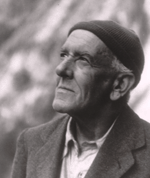Nationality Scottish Notable awards Royal Society (1927) | Name Thomas Brown Fields Physiology | |
 | ||
Died 1965, Edinburgh, United Kingdom | ||
Thomas Graham Brown FRS (1882–1965) (usually known as T. Graham Brown) was a Scottish mountaineer and physiologist.
Contents
Life and family
Graham Brown was born in Edinburgh 1882; his father – Dr J. J. Graham Brown – was a President of the Royal College of Physicians in Edinburgh. T. Graham Brown read science and medicine at the University of Edinburgh in the city before moving to Glasgow and then Liverpool. He served in the Royal Army Medical Corps during World War I; after the war he continued his work on the physiology of the nervous system, particularly reflex movements and posture, and in 1920 he accepted the Chair in Physiology at the University of Wales at Cardiff. In 1927 he was elected a Fellow of the Royal Society.
Alpinism
The east or Brenva face of Mont Blanc was the scene of his most famous first ascents, his three new routes – the Sentinelle Rouge, Route Major and the Pear Buttress – constituting "the most important new routes made by British climbers in the Alps in the inter-war years." In an article in the Alpine Journal, Graham Brown wrote
The great Brenva face of Mont Blanc de Courmayeur and Mont Blanc had not been climbed between the line of Gussfeldt's ascent of the Aiguille Blanche de Peterey and the line of the Brenva route until Smythe and I had the good fortune to discover the 'Sentinel' route in 1927.
He climbed the first of these routes, the Sentinelle Rouge, with Frank Smythe on 1–2 September 1927. Smythe also accompanied him on the first ascent of Route Major on 6–7 August 1928. According to Claire Engel, "both expeditions were among the most notable of the century". The third route – the Pear Buttress – ascended the large rock buttress on the left of the face, and was made by Graham Brown, together with Alexander Graven and Alfred Aufdenblatten, on 5 August 1933.
Graham Brown was the editor of the Alpine Journal from 1949 to 1953.
In 1935, Graham Brown made the first ascent of Alaska's 5304 m Mount Foraker in company with Charles Houston and Chychele Waterston.
In 1936, Graham Brown was part of the joint British–American team that made the first ascent of Nanda Devi in the Indian Himalaya, though only two of the party, Bill Tilman and Noel Odell, made the summit.
Bequests
Graham Brown bequeathed his collection of alpine and mountaineering literature, consisting of some 20,000 items, to the National Library of Scotland. He left his house for the use of the Edinburgh University Mountaineering Club. The original house was sold by Edinburgh University as part of their sale of assets to meet debts in the 1990s. After protests by members of the time, the University named a flat in newly constructed student accommodation 'Graham Brown House' and is still used by the club.
